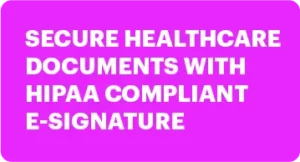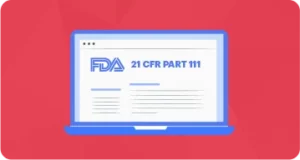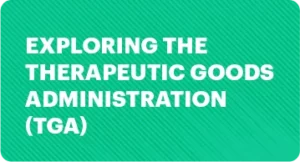Uncover the Fundamentals: A CISOs Guide to FedRAMP
Introduction: What is FedRAMP?
FedRAMP is an acronym for the Federal Risk and Authorization Management Program. Devised under a collaborative effort between the government, industry, and agencies, the program was created in an effort to streamline the process of security authorization for cloud service providers.
FedRAMP enables the federal government to rapidly outsource to, and integrate with, cloud service providers. The program is designed to reduce the time and resources used to validate data security measures and maintain compliance with security standards.
It is an important part of the US federal government’s initiative to operate more efficiently and securely. By implementing a transparent and efficient process that establishes a standardized set of security authorization requirements across all cloud service providers, the program increases government efficiency and enhances the security of the services provided.
Given the sensitive nature of the data which must be transferred between federal agencies and cloud service providers, FedRAMP ensures that all transfers are secure and meet the rigorous security requirements of the federal government.
FedRAMP Defined
Federal Risk and Authorization Management Program (FedRAMP) is an important security certification that demonstrates to the federal government that a third-party organization maintains a secure environment for their cloud-hosted application. It is mandated for organizations hosting or providing services to US Federal Government customers.
The goal of FedRAMP is to reduce the overall risk to government systems and data by ensuring that customer’s technology solutions meet rigorous security standards. The program helps organizations stay compliant with regulatory requirements and boosts customer confidence.
FedRAMP requires organizations to adhere to a strict set of rigorous security controls. These include:
- Developing a security assessment package
- Conducting an independent security assessment
- Ensuring ongoing compliance with security requirements
- Creating a system security plan (SSP)
Outline key elements of the certification process
The Federal Risk and Authorization Management Program (FedRAMP) provides a standardized approach to security assessment, authorization, and continuous monitoring for cloud products and services. The process has several key elements that organizations must understand to properly implement it. It’s important to note that FedRAMP is not a static program; the requirements potentially change as security best practices evolve.
The following outlines the basic steps associated with a typical FedRAMP certification process:
Perform a risk assessment and identify any areas of risk or non-compliance associated with the organization’s cloud environment.
Develop detailed security plans and documentation that outlines all associated controls and how they are configured within the system.
Secure an independent review of the security controls by a certified assessor.
Perform a thorough audit of the system and the related controls to ensure the security documentation is correct and up-to-date.
Submit the required documentation to the FedRAMP Joint Authorization Board (JAB) for review and assessment.
Complete any necessary remediation to satisfy the JAB’s feedback.
If approved by the JAB, prepare the required paperwork and receive the official FedRAMP authorization.
Organizations must also maintain their FedRAMP authorization by continually monitoring security controls, creating detailed reports, and engaging in annual reviews. This process may involve engaging external third-party resources to assist in proofing and verification activities.
Roles and Responsibilities of Stakeholders
One of the key components of the FedRAMP process is understanding the roles and responsibilities of all the stakeholders. With such a complex process, it is important that everyone involved is well-versed in what they are expected to do.
The first and most obvious stakeholders are the agency or company undergoing the certification process. This organization is responsible for developing, testing, and maintaining the security controls to meet the requirements set forth by the FedRAMP program. All security protocols must be compliant with the standards and any changes must be documented.
In addition to the agency or company, there are a number of other stakeholders in the process. Federal agencies and vendors must provide oversight of the certification process, including verifying the documentation and providing feedback. There are also Program Management Offices (PMOs) that are responsible for ensuring that the organization remains compliant throughout the process. Third-party assessors and auditors are also essential stakeholders in the process, as they are responsible for validating the controls within an organization.
Along with the roles and responsibilities of each stakeholder come the obligations of the organization. The company or agency undergoing the certification process should ensure that all security protocols are regularly updated and implemented properly. They should also be proactive in providing feedback to the PMOs and third-party assessors/auditors to ensure that they understand the organization’s timetable and plan. Lastly, the organization should be open to implementing suggestions from the assessors and auditors in order to ensure successful completion of the certification process.
Security Protocols
The Federal Risk and Authorization Management Program (FedRAMP) requires organizations to demonstrate that they have adequate security protocols in place by providing documentation, interviews, and reviews. Organizations must ensure that their systems are capable of protecting data at rest and in transit, as well as defending against unauthorized access. Organizations must also have the ability to detect and respond to incidents quickly and effectively.
Organizations must identify what type of data they are storing, and ensure that the necessary measures have been taken to protect the data from unauthorized access or misuse. This includes policies such as password complexity, multi-factor authentication, and encryption for data stored and transmitted over networks. Organizations must also provide evidence that they have implemented a patch management system to ensure software remains up to date.
Organizations must also be able to demonstrate that they have systems in place to protect their networks from malicious activities from outside actors. This should include an intrusion prevention system (IPS), firewalls, and logging tools that can detect suspicious activity. Furthermore, organizations must show that they have processes in place to monitor for unauthorized access and alert personnel in a timely manner. Organizations must be able to provide evidence that they have safeguards in place to ensure the confidentiality, integrity, and availability of data.
Developing an Individual Compliance Work Plan
To keep up with the constantly changing security landscape, organizations must develop a comprehensive compliance work plan to ensure they are meeting all regulatory standards set up by the Federal Risk and Authorization Management Program (FedRAMP). This work plan will help your organization adhere to the guidelines and policies mandated by the program.
Before starting the development of the work plan, it is important to understand that the plan will need to be reviewed and approved by a designated FedRAMP Authority. Once approved, the work plan should become the official document detailing your security protocol requirements. It should include the following:
- A detailed description of the system’s security requirements
- The roles and responsibilities of approved personnel
- Development timelines for specific tasks
- Adherence to relevant industry or government standards
- A comprehensive list of security policies and procedures
Creating a compliant work plan is a lengthy process. First, review and understand the FedRAMP documentation and determine what is applicable to your system. Then create a detailed checklist of individual tasks to make sure you are completing the necessary elements of the certification process. Finally, ensure that all tasks are properly documented and regularly monitored.
Identifying Common Pitfalls During the Certification Process
Failed FedRAMP certifications can be very costly for organizations, both in terms of time and money. It is important to be aware of common pitfalls that organizations may encounter during the certification process. The most common pitfalls include:
- Inadequate documentation of requirements and policies
- Failure to properly document security measures such as patching and logging
- Inadequate response to FedRAMP request for additional information
- Failure to adequately test system security controls
- Lack of understanding of public cloud technology, operations, and architecture
- Underestimating the complexity of the authorization process and timeline
- Unexpected challenges due to platform or operational changes
Organizations should strive to avoid these pitfalls by paying close attention to the requirements outlined in the FedRAMP documentation. By having a clear understanding of the process and a comprehensive plan of action, organizations can minimize the chances of an unsuccessful certification.
Highlighting Strategies for Addressing Potential Security Shortcomings in the Documentation
Securing a system can leave almost no avenue unexplored when it comes to FedRAMP documentation. CISOs need to identify potential security loopholes quickly and develop strategies for addressing them.
One way to do this is to be proactive about taking quick steps to protect the system and personnel from threats, such as reviewing access levels, implementing additional controls, and conducting regular security tests and reviews.
It is also important to develop clear security protocols that are suitable for the organization’s needs and capabilities. This should include measures such as mitigating risks through security policies and regular monitoring, and assigning roles and responsibilities to ensure the correct safeguards are in place.
Additionally, updating existing policies and procedures can help address potential security gaps and pinpoint areas where extra protection may be needed. For example, introducing encryption to any third-party data that is stored onsite or online can help secure sensitive information from cybercriminals.
CISOs should regularly review their security policies to ensure they are still effective and up-to-date with any new regulations or industry standards. It is also a good idea to keep track of any third-party services, applications, or cloud infrastructure that may be used in the system. This will help to identify any security vulnerabilities that may be present in these external services.
Finally, having an open dialogue with stakeholders about any potential risks can help raise awareness and prompt quick action when needed. By regularly discussing security protocols and best practices, organizations can quickly address potential security threats and take the necessary steps to ensure their system remains secure.
Investigating Third-Party Resources
Security issues can be difficult to address, especially when working with tight budgets and timelines. One way organizations can effectively address security issues is by taking advantage of third-party resources. Third-party resources are certified cloud service providers who have gone through the rigorous FedRAMP screening process.
By working with a third-party resource, organizations are able to quickly identify potential security risks and address them in an efficient manner. The third-party resources come with their own set of security protocols that must be satisfied in order for the organization to maintain its security profile. Organizations should carefully research third-party resources to ensure the protocols are compliant.
Organizations should keep in mind that the cost of utilizing third-party resources may affect the overall budget. However, when weighed against the time and effort needed to address the security needs internally, it often proves to be a more cost-effective solution in the long run.
In addition to cost savings, using third-party resources also reduces the time and effort needed to address security issues. Organizations have a better chance of staying compliant with FedRAMP protocols when using experienced third-party resources. Furthermore, third-party resources may also provide additional services such as training or monitoring.
When evaluating a third-party resource, organizations should take into consideration multiple factors such as expertise, cost, customer service, and scalability. Organizations should also be sure to review qualifications and certifications, as well as reviews or references, in order to determine the best third-party resource for their particular needs.
Security Best Practices
Security best practices are important when it comes to protecting your organization from potential vulnerabilities and threats. It is essential to ensure that all users follow the security protocols mandated by FedRAMP in order to ensure compliance. The following guidelines should help your organization maintain a secure environment:
- Implement multi-factor authentication for all user accounts.
- Enable automated updates for all system components.
- Monitor user activity and access to sensitive data.
- Rotate passwords regularly.
- Follow industry standard encryption protocols.
- Perform regular system scans using anti-virus software.
These security best practices should be followed to guarantee the safety of your systems and data. If any of these practices are not followed, it may lead to non-compliance and a potential security breach. It is important to ensure all users are kept up to date and educated on the latest security protocols.
The Financial Impact of FedRAMP Preparation
Organizations of all sizes should consider the financial impact of achieving FedRAMP certification. The cost of becoming FedRAMP certified is quite costly, and can range from $20,000 to $100,000 depending on the size and complexity of the organization. This includes costs related to hiring third-party consultants or vendors, as well as any additional legal and security assessments that need to be conducted.
In addition to the upfront cost of preparation, organizations should also budget to cover ongoing fees associated with maintaining its FedRAMP certification. These fees include yearly system reviews and audits, which are designed to ensure the organization complies with all security protocols and requirements established by the Federal government.
Fortunately, there are options available to large organizations that are looking for financial assistance in achieving FedRAMP certification. The Federal government offers rebates and subsidies to organizations that complete the process with success. The money will typically be applied towards the organization’s smart procurements, cloud services, and other IT initiatives.
Organizations should also consider the financial benefits of becoming FedRAMP certified. FedRAMP certification allows an organization to do business with Federal agencies, provides a competitive edge in the industry, and shows customers and partners that the organization is serious about security. These benefits can lead to greater efficiency within the organization and lower overall costs for maintaining secure systems.
The Importance Of FedRAMP
Federal Risk and Authorization Management Program (FedRAMP) is a U.S. government-wide program that provides a standardized approach to the security assessment, authorization, and continuous monitoring of cloud computing products and services. The overall goal of this program is to help organizations reduce risk and provide secure access to digital data.
As a CISO, it is important for you to understand the significance of FedRAMP in enhancing the security of your organization’s data. This comprehensive reference guide has provided you with all the necessary information to get started with this program. You now know how to navigate through the key elements of the certification process, establish roles and responsibilities within your organization, develop a compliance work plan, identify common pitfalls, and ultimately, enhance the security of your digital data.
Overall, FedRAMP establishes a governmental-wide security standard for cloud service providers, helps organizations reduce risk, and enable secure access to digital data. Investing in this program is worth the time and money since it pays dividends in the long run as your organization is more secure and can better comply with legal requirements.
Frequently Asked Questions
1. What is FedRAMP?
FedRAMP is a mandatory Government-wide program that provides a standardized approach to security assessment, authorization, and continuous monitoring of cloud products and services.
2. What core concepts are associated with FedRAMP?
Core concepts associated with FedRAMP include risk assessment, gap analysis, compliance with Federal Information Security Management Act (FISMA) regulations, security control mappings, system security plans, and continuous monitoring.
3. What are the key elements of the certification process?
The key elements of the certification process include authoring a Risk Assessment Report, creating a System Security Plan (SSP), performing a gap analysis, and generating an Authorization package.
4. What roles and responsibilities do stakeholders have for FedRAMP compliance?
Major roles and responsibilities include Cloud Service Providers (CSPs) who register and manage access to their services, Third Party Assessment Organizations (3PAOs) who conduct the assessment, Federal Agencies who validate the assessment results, and Authorizing Officials (AOs) responsible for approving a system for operation.
5. What security protocols do organizations need to satisfy?
Security protocols that organizations need to satisfy include requirements from the Office of Management and Budget (OMB), National Institute of Standards and Technology (NIST), and the FedRAMP tailoring baseline.
6. What strategies are available to address potential security shortcomings in the documentation?
Potentially effective strategies involve assessing any identified weaknesses against existing cloud capabilities, evaluating any potential workarounds, differentiating between must-have vs. should-have requirements, and leveraging existing compliance framework resources whenever possible.
7. What is the financial impact of FedRAMP Preparation?
The financial impact of FedRAMP Preparation is primarily dependent on the size, complexity, and availability of existing documentation. For small to medium sized businesses, costs can range from several thousand to tens of thousands of dollars in both direct and indirect expenses.





